KOMIKS INTERVIEW With Lan Medina [UPDATE]
Flipgeeks gets to interview Filipino comic book artist, Lan Medina, Mostly known for his stupendous work on Vertigo’s FABLES, he’s the first Filipino to win the prestigious Eisner Award for comics. With Marvel’s The Punisher MAX Imprint and his current work – Deathlok: Demolisher, Iron Man: Rapture, Castle: Richard Castle’s Deadly Storm, we get to know his roots and history with the Philippine ‘Komiks’ industry, a brief conversation about his uproar in the foreign comic book industry and some words for the current local ‘komiks’ scene..
[UPDATE: The Flipgeeks team has transcribed Lan Medina’s answers in this interview into English for the international audience. Hope you enjoy. We want to credit Duy Tano for the assistance.]
FLIPGEEKS: Back then, how did you start your career in the Philippines?
LAN MEDINA: Bata pa ko mahilig na akong magdrowing, nung nag-aarala ko makikita sa notebook ko di nawawalanng mga doodles, nagkainteresa ko sa komiks ng makita ko ang gawing mga Pinoy na silaVicatan, Redondo, A. Nino, Vincent Kua, Malgapo at Infante… sabi ko sa sarili ko: “Sana baling araw makagawa din ako dito.”
Dumating ang araw na yun ng may nagsabi sakin na ba’t di ko subukang magpakita ng samples sa Atlas Publication, time na yun si Ruben Marcelino pa ang Chief Editor dun. Medyo mahigpit pag dating sa drawing, dahil sa wala pa kong gaanong kaalaman sa drawing, pati mga gamit ng artist wala ako, hinde ako nakapasa. Naging challenge sa kin yun, di ako tumigil, nakilala ko dun ang mga batikang artist na sila Ka Abe Ocampo, Nar Cantillo, Danny Taverna na bibilib ka sa mga original nila dahil talagang mahuhusay. Nung mahasang konti sinubukan ko sa GASI, at dun ako pinalad na makapag-umpisa sa komiks.
[Since I was a kid, I had a like in drawing. Subsequently, I was a student, so there wouldn’t be a notebook that I’ve had without some of my doodles. There I gained an interest into ‘komiks’ when I saw works of some Filipinos, like Vicatan (aka Vic Catan Jr), (Nestor) Redondo, (Alex) Nino, Vincent Kua, (Nestor) Malgapo and (Nestor) Infante. I told myself: ‘I hope someday that I would make ‘komiks’ here’.
That day came when someone told me that why don’t I try showing samples at Atlas Publication. As it was the time of Ruben Marcelino as the Editor in Chief, he had some very rigid ideas when it comes to art. With the lack of knowledge that I had in drawing and even not having the tools of an artist, I didn’t pass. It became a challenge to me afterwards and it did not make me want to stop. There I got to meet a group of renowned artists – Ka Abe Ocampo, Nar Cantillo and Danny Taverna, and you will just be amazed when you see their actual original work because they are truly skillful. Anyway, when I sharpened a bit of my drawing skills, I tried to apply over at GASI (Graphic Art Services, Incorporated). And there I got hired and started my career into ‘komiks’.]
FG: How was ‘komiks’ back then?
LM: Magandaang takbong komiks way back, madaliang pera at maraming trabaho, masipag ka lang. Buhay na buhay ang mga artist nung mga panahon na yun… di ako nawawalan ng scripts, short stories at mga nobela…nanghinayang din akong mawala ang komiks dito dahil marami ring artist ang umaasa nuon sa komiks.
[‘Komiks’ way back were running beautifully, It was easy money and there were a lot of jobs, if you were diligent that is. Artists were living the life around those times… There was never a time I didn’t get scripts, short stories and novels to work on… It was just a pity when ‘komiks’ fell because there were a lot of artists depending so much on them.]
FG: Who were the people in the Philippine Komiks industry did you look up to?
LM: You mean influence? Sila Redondo, Vicatan, Rudy Florese, Tor Infante at Malgapo.
[You mean influence? Like Redondo, Vicatan, Rudy Florese, Infante and Malgapo.]
FG: What about outside the Philippines?
LM: Marami sa abroad like Whilce Portacio, Charest, Coipel, Zappino, Immonen, Joe Kubert, Norman Rockwell, etc….
[There’s a lot in abroad, like Whilce Portacio, (Travis) Charest, (Olivier) Coipel, Zappino, (Stuart) Immonen, Joe Kubert, Norman Rockwell, etc….]
FG: Did you take any formal schooling for art?
LM: Tingin ko walang school para sa komiks illustrating…natuto ako from senior artists din, from their comments and advice, meron nun mga seminars.
[I think there weren’t any formal school for comic book illustration… I learned from senior artists, from their comments and advice. And there were seminars too.]
FG: As time goes by, how did you improve yourself?
LM: Malaking bagay din yung tumitingin ka sa gawa ng mga pro artist, tingin ko isa rin ito sa mga paraan para mag-improve ang mga gawa mo, dahil sa kanila matututo ka then dun ma dedevelop ang saril imo.
[I think observing works of pro artists can be in a big way, one of the means to improve your own work. With that, you’ll learn.]
FG: What was the komiks that you were most proud of doing?
LM: Lahat naman ng ginawa ko sa komiks proud ako.
[I’m proud of all the ‘komiks’ that I did.]
FG: How did you decide to enter the comic book industry in the US?
LM: A… nung time na nawala ang komiks dito sa local, sinubukan kong magtry sa komiks abroad, swerte naman dahil nakilala ko si Whilce na friend ni Gilbert Monsanto na silang tumulong sa kin para maka pasok sa comics abroad.
[Well… around the time when the local comics fell, I tried getting into comics abroad. I was just in luck because I got acquainted with Whilce by friend, Gilbert Monsanto. Both of them helped me to get into comics abroad.]
FG: You are well known from your involvement with the Vertigo hit, Fables. How did you get that gig?
LM: Brian Haberlin a friend of Whilce asked me to do a sample for Fables, then pinakita nya sa editor na siShelly Bond, then yun na, dun na nagsimula.
[Brian Haberlin, a friend of Whilce asked me to do a sample for Fables. Then he showed it to the editor, Shelly Bond. Then there, that’s where it began.]
FG: Do you use reference materials or is that just a natural talent?
LM: Yun talent andun na, pero importante pa rin ang ref sa comics, malaking bagay ito.
[The talent is already there, but it really important to use references in comics in a big way.]
FG: How did it feel at that time that you were starting to get some recognition, especially from the international audience?
LM: I feel so proud. Sabi nga ng isang artist na nagsigning sya sa abroad, he felt like a rock star, tingin ko ito rin ang mararamdaman ng bawat artist nagumagawa sa abroad.
[I feel so proud . An artist who had a signing abroad told me that felt like a rock star. But, I think that is what every artist feels who does work abroad.]
FG: Would you like to draw ‘komiks’ again?
LM: Yap… pero first love ko yung painting, mahal lang ang course na ito nung panahon na hirap kami,financial problem, siguro pagnagretire nako sa comics pwede nakong magfocus sa painting.
[Yeah… but, my first love is painting. The courses for painting were expensive around hard times and financial problems with my family back then. Maybe when I retire in comics, eventually I can focus myself into painting.]
FG: What do you think of ‘komiks’ today?
LM: Local comics today sa Pinas, malabo… kasi mas lamang ang commercial kesa sa quality di gaya nung dati magandaang quality ng drawing, printing… etc…
Kung susuriin mo ang comics sa abroad, makikita mo ang dedikasyon ng artist sa mga gawa nila, angquality ng kabuuan ng comics nandun kaya hanggang ngayon buhay na buhay ang comics industry sa abroad. Nagpapasalamat ako dahil naging part ako nito.
[Nowadays, local comics in the Philippines has so much uncertainty because there is so much emphasis in commercialism and not more into quality. Not like back then, the quality of art and printing and etc. were so great.
If you are going to analyze the comic books abroad, you’ll see the dedication of the artists through their art. The quality of comic books, as a whole, is there. That’s why up to now, the comic book industry in abroad is still living and alive. I’m just thankful that I’m part of it.]
FG: What about the new generation of komiks creators? Do you have any tips for them? What kind of tips and advices for those who want to break into the international scene?
LM: Unang una need na may kaalaman ito sa human anatomy, may aral sa paggawa ng komiks at intindihing mabuti ang sasabihin ng pro artist sa comments and advice nito once nanagpakitang mga samples dito. ”Learn from the experts” ika nga.
[First, the need to have knowledge of human anatomy. Then the know-how process to make ‘komiks’. And last, to listen and fully understand the advice and comments from pro artists once you show them your samples. Like they say, “Learn from the experts.”]
FG: Tell me about your current and future projects. What are they? When will we expect them on the shelves?
LM: Future projects… di ko pa alam…pero ginagawa ko ngayon yung Venom [Marvel Comics with writer, Rick Remender]. Sa ngayon wala pa kong alam kung kelan ito lalabas.. pero nag-start ako issue 9.
[Future projects… I’m not sure… but, I’m currently doing Venom [Marvel Comics with writer, Rick Remender]. For now, I’m not sure on when it is coming out, but I’m going to start in issue #9.]
FG: I hope that Flipgeeks can have a series of interviews with you in the future regarding to your career, thoughts and current & future projects.



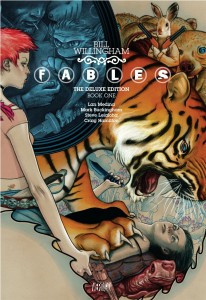
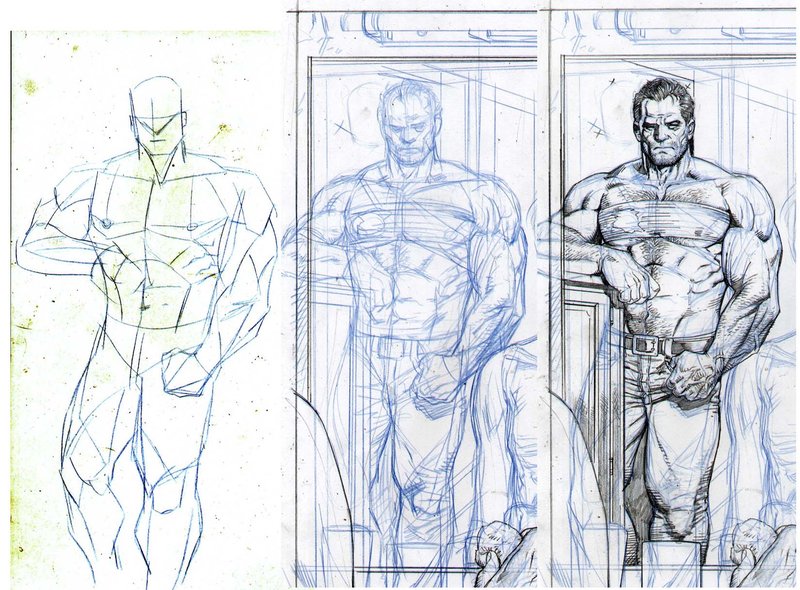
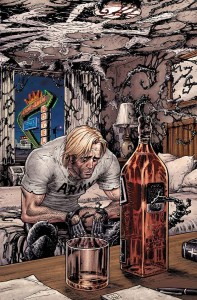



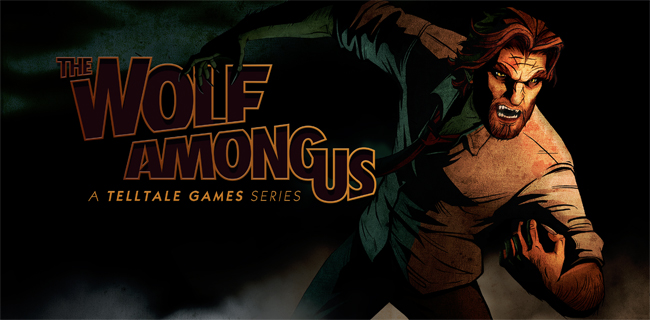








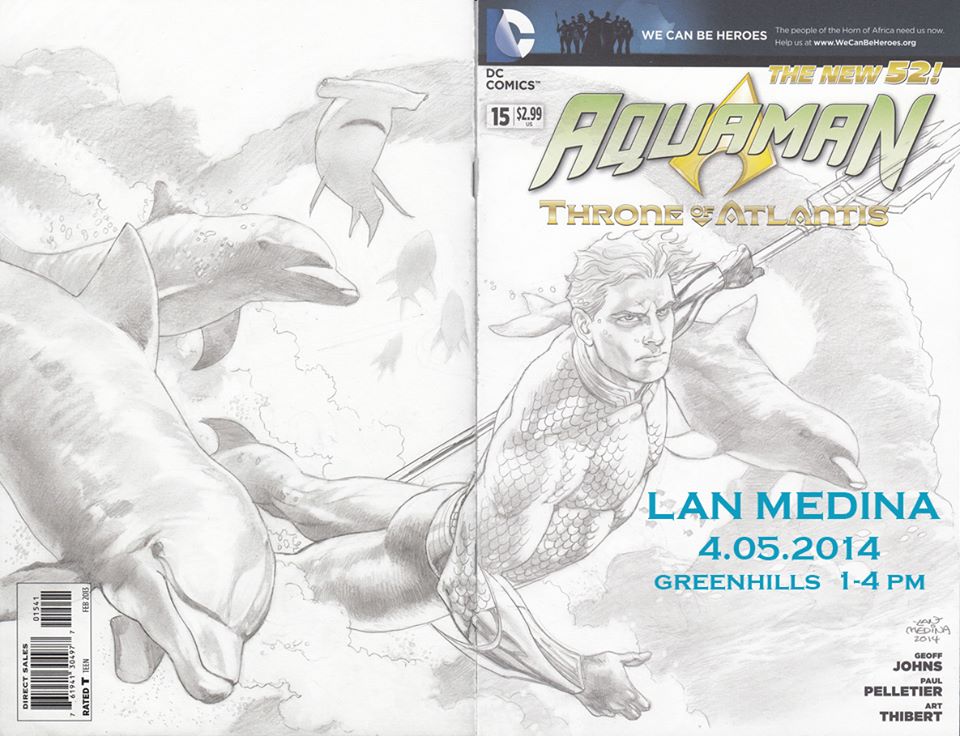












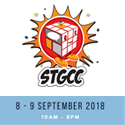



Nice interview. Only a few of local komiks artists today can we see quality works. Sana bumalik ang mga panahon ng komiks na priority ang quality at hindi quantity.